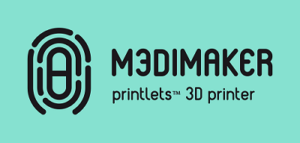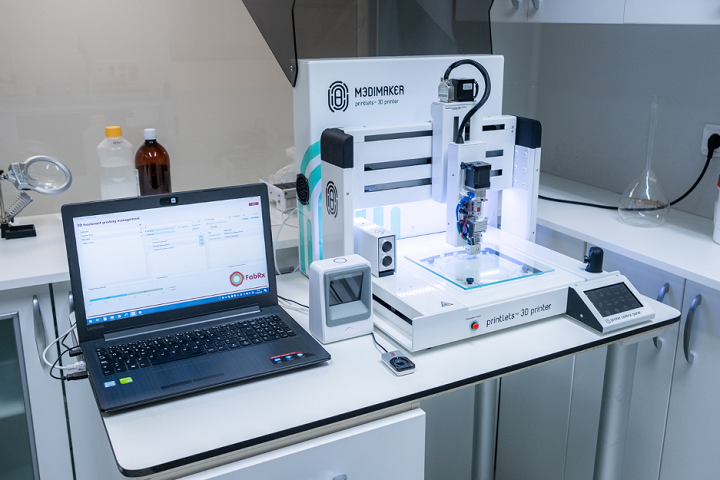Most medicines these days are made with mass manufacturing production methods, which produce drug forms that have identical characteristics, such as appearance, drug release, and dosage. But issues abound with this way of doing things – inappropriate dosing can cause bad side effects, and even lead to a lack of treatment for young and elderly patients. Often in pediatric treatment, caregivers are told to split, or even crush, pills in order to meet the proper dosage requirements for their age. This can actually cause inaccurate dosages, and even medicines being incorrectly used. We obviously need age-appropriate pharmaceutical formulations, but personalized medicines aren’t really in the wheelhouse of most traditional manufacturing methods.
 Founded in 2014, FabRx Ltd., a pharmaceutical biotechnology spin-out company from the University College London’s School of Pharmacy, has spent the last several years researching and developing 3D printed, customized drugs and drug-loaded medical devices. The company first tried out FFF and SLA technologies, and then SLS 3D printing, to fabricate its proprietary Printlets.
Founded in 2014, FabRx Ltd., a pharmaceutical biotechnology spin-out company from the University College London’s School of Pharmacy, has spent the last several years researching and developing 3D printed, customized drugs and drug-loaded medical devices. The company first tried out FFF and SLA technologies, and then SLS 3D printing, to fabricate its proprietary Printlets.
In 2018, FabRx received a grant of almost £1 million from Innovate UK to develop the first personalized medicine 3D printer. Last year, it completed the first in-human clinical study in the world with 3D printed tablets. The study successfully demonstrated that 3D printing is a feasible and effective manufacturing method to prepare oral tailored-dose therapies in a hospital setting. Now, the company has released the M3DIMAKER, the first pharmaceutical 3D printer for fabricating personalized medicines.
“We are delighted to be launching our state-of-the-art 3D printing system in light of the recommendations from the regulatory organisations into the pharmaceutical market,” Dr. Alvaro Goyanes, Director of Development at FabRx, said in a press release. “I truly believe that we are one step closer to personalised medicine thanks to the M3DIMAKER™.”
The company’s hard work shows that additive manufacturing can deliver on-demand, unique medicines that feature dosages and appearances meant for specific patients. Its Printlets can be made with precise doses, and for patients who require a lot of drugs, the 3D printed tablets can even combine more than one medication into a single polypill.
 The newly launched M3DIMAKER 3D printer was first introduced at the ILMAC Exhibition in Basel, Switzerland) in September 2019. It has been tested around the world in pharmacies, research institutes, and hospitals, which is why it’s now available on the market.
The newly launched M3DIMAKER 3D printer was first introduced at the ILMAC Exhibition in Basel, Switzerland) in September 2019. It has been tested around the world in pharmacies, research institutes, and hospitals, which is why it’s now available on the market.
The printer, which features multiple nozzles for adaptive manufacturing purposes, is made with a “sleek hardware system” that’s controlled by special yet user-friendly software in order to select the required dose chosen by a physician’s prescription and prescribed by a pharmacist. It has camera monitoring to detect print errors and track progress, advanced in-line quality control procedures, and 3D print 28 Printlets, or one month’s worth of medication, in about eight minutes, depending on the specific medication being fabricated.
The M3DIMAKER system can make pills using both FDM technology and direct powder extrusion, thanks to its alternating nozzles. Additionally, the versatile printer ensures security and reliability by using fingerprint access control and a data matrix reader. This way, only authorized personnel will have access.
There are many different applications for the new FabRx M3DIMAKER 3D printing system, including making personalized medications for clinical practices, research, and drug development, such as producing small batches for pre-clinical and clinical studies. To see the system in action, take a look at the video found here.
Discuss this story, and other 3D printing topics, at 3DPrintBoard.com or share your thoughts in the Facebook comments below.
(Images provided by FabRx)
Subscribe to Our Email Newsletter
Stay up-to-date on all the latest news from the 3D printing industry and receive information and offers from third party vendors.
You May Also Like
3D Printing Unpeeled: New Arkema Material for HP, Saddle and Macro MEMS
A new Arkema material for MJF is said to reduce costs per part by up to 25% and have an 85% reusability ratio. HP 3D HR PA 12 S has been...
3D Printing News Briefs, January 20, 2024: FDM, LPBF, Underwater 3D Printer, Racing, & More
We’re starting off with a process certification in today’s 3D Printing News Briefs, and then moving on to research about solute trapping, laser powder bed fusion, and then moving on...
3D Printing Webinar and Event Roundup: December 3, 2023
We’ve got plenty of events and webinars coming up for you this week! Quickparts is having a Manufacturing Roadshow, America Makes is holding a Member Town Hall, Stratafest makes two...
Formnext 2023 Day Three: Slam Dunk
I’m high—high on trade show. I’ve met numerous new faces and reconnected with old friends, creating an absolutely wonderful atmosphere. The excitement is palpable over several emerging developments. The high...

































